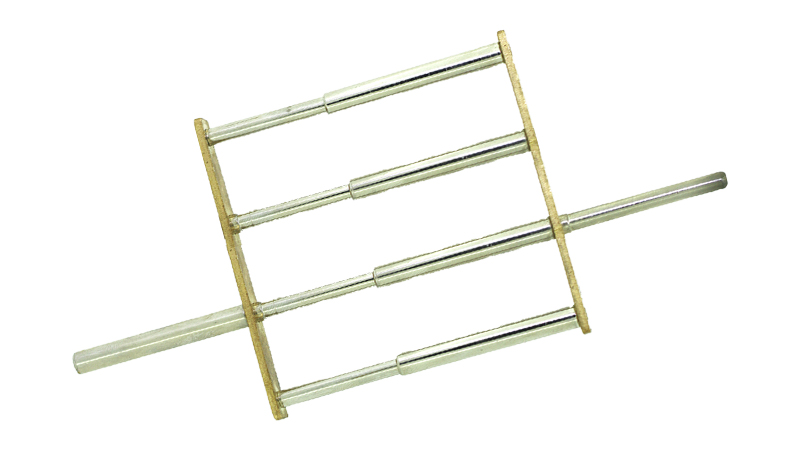Pv Solar T-connectors: The innovative power to connect the future of energy
In the wave of pursuit of clean energy, photovoltaic solar power generation systems are gradually becoming people's first choice. In this system, the PV solar T-connector, as a key component, plays an important role in achieving efficient energy transmission and reliable connections. Let's take a closer look at this small and powerful connector, explore its performance parameters, standard requirements, and future trends and innovation directions.
(Click on the picture for details)
Performance parameters and standard requirements
Pv solar T-type connectors are favored for their excellent performance parameters and for meeting stringent standard requirements. Let's take a look at some of the important specifications:
Rated voltage: The rated voltage of the PV solar T-type connector can reach 1000V, which provides the system with stable working ability under high voltage. This makes the connectors suitable for solar power systems of all sizes, from home rooftop installations to large photovoltaic power plants.
Insulation material: The connector adopts high-performance insulation material PPO (polyphenyl ether), which has excellent electrical insulation performance and heat resistance. This material can maintain good insulation properties over a wide temperature range, ensuring the reliable operation of connectors in harsh environments.
Conductor material: Photovoltaic solar T-type connectors use tinned copper as conductor material to ensure low resistance and efficient energy transmission. Tinned copper has good electrical conductivity and oxidation resistance, which can effectively reduce energy loss and improve the overall efficiency of the system.
Ambient and product temperatures: Connectors are capable of operating over a wide range of ambient temperatures, from extremely cold -40 ° C to as high as +95 ° C. At the same time, the connector's own product temperature range is also quite wide, from -40 ° C to +135 ° C. This guarantees the reliability and stability of the connector in various climatic conditions.
Safety level and waterproof level: The PV solar T-connector meets the safety standards of the DCII level to ensure the circuit safety and stability of the system. In addition, the connector has IP68 waterproof performance, which can effectively resist the impact of moisture and humidity on the connector, providing long-term reliable connection protection.
Contact resistance and connection system: The contact resistance of photovoltaic solar T-type connectors is controlled within 0.35mΩ, ensuring minimum energy loss and maximum current transmission efficiency. In addition, the connector uses a multi-point connection system, enabling reliable electrical connections and providing greater safety and stability.
Self-locking system and flame retardant rating: The connector adopts an embedded self-locking system to ensure the fastness and stability of the connector. In addition, the flame retardant rating of the connector reaches the UL94-VO level, with excellent flame retardant performance, effectively protecting the system from fire and other risks.

(tinned copper conductor inner core)
Future development trend and innovation direction
The development prospects of photovoltaic solar T-type connectors are very broad, and there are several trends and innovative directions worth paying attention to:
Improved power density and efficiency: Future photovoltaic solar systems will pursue higher power density and energy conversion efficiency. Connectors will be designed with a greater focus on reducing resistance losses, improving conductivity, and adapting to higher current and power requirements.
Intelligent and monitoring functions: With the development of the Internet of Things and smart grids, photovoltaic solar systems will be combined with intelligent technologies. Connectors may have monitoring capabilities that enable real-time monitoring of parameters such as current, voltage, and temperature to provide system operating status and fault diagnosis to optimize system performance and maintenance.
Better weather resistance and durability: photovoltaic solar systems are usually exposed to outdoor environments for a long time, which puts higher requirements on the weather resistance and durability of connectors. Future connectors may use more advanced materials and coating technologies to enhance their UV, oxidation and corrosion resistance and extend the service life of the connector.
Fast connection and installation: Simplifying the installation and removal of connectors is an important innovation direction. Future connectors may use more convenient plug and pull designs or automatic connection technology, reducing installation time and manual operation, and improving system maintainability and convenience.
Sustainable development: Environmental friendliness and sustainable development are important directions for the future energy industry. Connectors may be manufactured using more environmentally friendly and recyclable materials, reducing the negative impact on the environment. At the same time, connectors may also be designed with reuse and recycling possibilities in mind to reduce resource consumption and waste generation.
In short, photovoltaic solar T-type connectors play a crucial role in photovoltaic power generation systems. By continuously improving performance parameters, meeting standard requirements, and paying attention to future trends and innovative directions, connectors will continue to promote the development of the solar industry and contribute to the sustainable use of clean energy.
You can also contact us directly in the following ways: visit, telephone, email